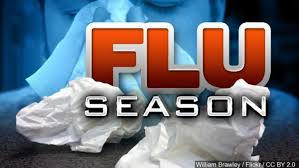As Northwest Georgia enters its typical influenza season, local health experts are issuing urgent calls for vaccination, a message made more critical by a federal government shutdown that has severely hampered the state’s ability to track the virus’s spread.
The federal appropriations lapse, which began in late September 2025, has halted standard national respiratory virus surveillance from the Centers for Disease Control and Prevention (CDC). This data vacuum has left the Georgia Department of Public Health (DPH) operating with “critical blind spots” just as the flu season, which typically starts in early October, begins to ramp up.
In response to the data blackout, the DPH has paused its standard comprehensive influenza report, which relies heavily on federal data transfers. Instead, the state has developed an “interim Georgia Influenza Report,” forcing DPH officials to rely exclusively on state-collected information—a method public health experts nationwide are terming “DIY surveillance.”
Peak Season Approaches: Vaccination Urged
Health officials emphasize that the most effective preparation remains vaccination. The flu season is expected to peak between December and February, although activity can continue as late as May. To ensure maximum protection before the winter surge, the DPH strongly advises residents to receive their flu shot in September or October.
“Getting vaccinated now is the single most important step residents can take to protect themselves and their communities, especially because our visibility into the current disease landscape is limited,” stated a DPH spokesperson.
Limited State Data Shows Recent Decline
Despite the limitations, the interim report, last updated in mid-October 2025, provides a snapshot of current respiratory disease activity based on available state data.
The surveillance, derived primarily from emergency room visits, indicated a decline in suspected COVID-19, flu, and RSV cases between August and early October. The state report also utilizes Georgia’s robust wastewater surveillance program, which provides crucial early warning signals of disease spread before confirmed cases appear in hospitals and clinics.
The Impact of the Data Gap
Public health officials cautioned that the interim report is incomplete. The primary limitation stems from the fact that some hospitals and clinical labs report infectious disease data directly to the CDC, bypassing state reporting mechanisms.
A DPH spokesperson confirmed that this missing federal data prevents the state from providing a comprehensive picture of influenza activity across Georgia. This information gap affects crucial planning, resource allocation, and targeted public health campaigns.
The overall impact of the shutdown extends beyond surveillance. The halt has also prevented many CDC scientists, who play a pivotal role in national disease coordination, from attending key infectious disease conferences, further straining the ability of the public health community to prepare collectively for the upcoming winter.
The DPH confirmed that the interim report will be updated regularly using available state resources until federal data sharing resumes. Until then, citizens are strongly encouraged to focus on personal protective measures and immediate vaccination.








Comments